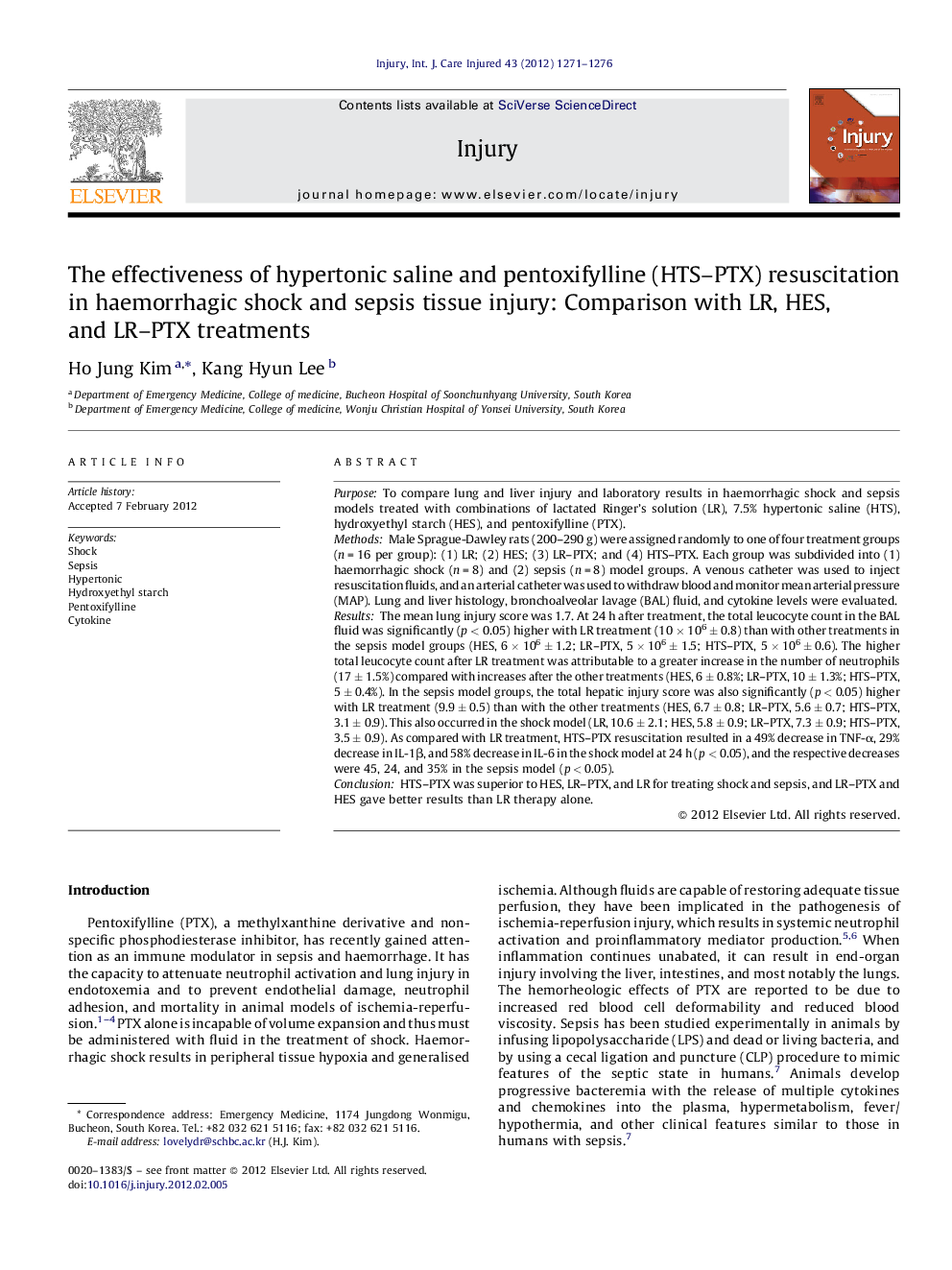| کد مقاله | کد نشریه | سال انتشار | مقاله انگلیسی | نسخه تمام متن |
|---|---|---|---|---|
| 3239567 | 1206011 | 2012 | 6 صفحه PDF | دانلود رایگان |

PurposeTo compare lung and liver injury and laboratory results in haemorrhagic shock and sepsis models treated with combinations of lactated Ringer's solution (LR), 7.5% hypertonic saline (HTS), hydroxyethyl starch (HES), and pentoxifylline (PTX).MethodsMale Sprague-Dawley rats (200–290 g) were assigned randomly to one of four treatment groups (n = 16 per group): (1) LR; (2) HES; (3) LR–PTX; and (4) HTS–PTX. Each group was subdivided into (1) haemorrhagic shock (n = 8) and (2) sepsis (n = 8) model groups. A venous catheter was used to inject resuscitation fluids, and an arterial catheter was used to withdraw blood and monitor mean arterial pressure (MAP). Lung and liver histology, bronchoalveolar lavage (BAL) fluid, and cytokine levels were evaluated.ResultsThe mean lung injury score was 1.7. At 24 h after treatment, the total leucocyte count in the BAL fluid was significantly (p < 0.05) higher with LR treatment (10 × 106 ± 0.8) than with other treatments in the sepsis model groups (HES, 6 × 106 ± 1.2; LR–PTX, 5 × 106 ± 1.5; HTS–PTX, 5 × 106 ± 0.6). The higher total leucocyte count after LR treatment was attributable to a greater increase in the number of neutrophils (17 ± 1.5%) compared with increases after the other treatments (HES, 6 ± 0.8%; LR–PTX, 10 ± 1.3%; HTS–PTX, 5 ± 0.4%). In the sepsis model groups, the total hepatic injury score was also significantly (p < 0.05) higher with LR treatment (9.9 ± 0.5) than with the other treatments (HES, 6.7 ± 0.8; LR–PTX, 5.6 ± 0.7; HTS–PTX, 3.1 ± 0.9). This also occurred in the shock model (LR, 10.6 ± 2.1; HES, 5.8 ± 0.9; LR–PTX, 7.3 ± 0.9; HTS–PTX, 3.5 ± 0.9). As compared with LR treatment, HTS–PTX resuscitation resulted in a 49% decrease in TNF-α, 29% decrease in IL-1β, and 58% decrease in IL-6 in the shock model at 24 h (p < 0.05), and the respective decreases were 45, 24, and 35% in the sepsis model (p < 0.05).ConclusionHTS–PTX was superior to HES, LR–PTX, and LR for treating shock and sepsis, and LR–PTX and HES gave better results than LR therapy alone.
Journal: Injury - Volume 43, Issue 8, August 2012, Pages 1271–1276